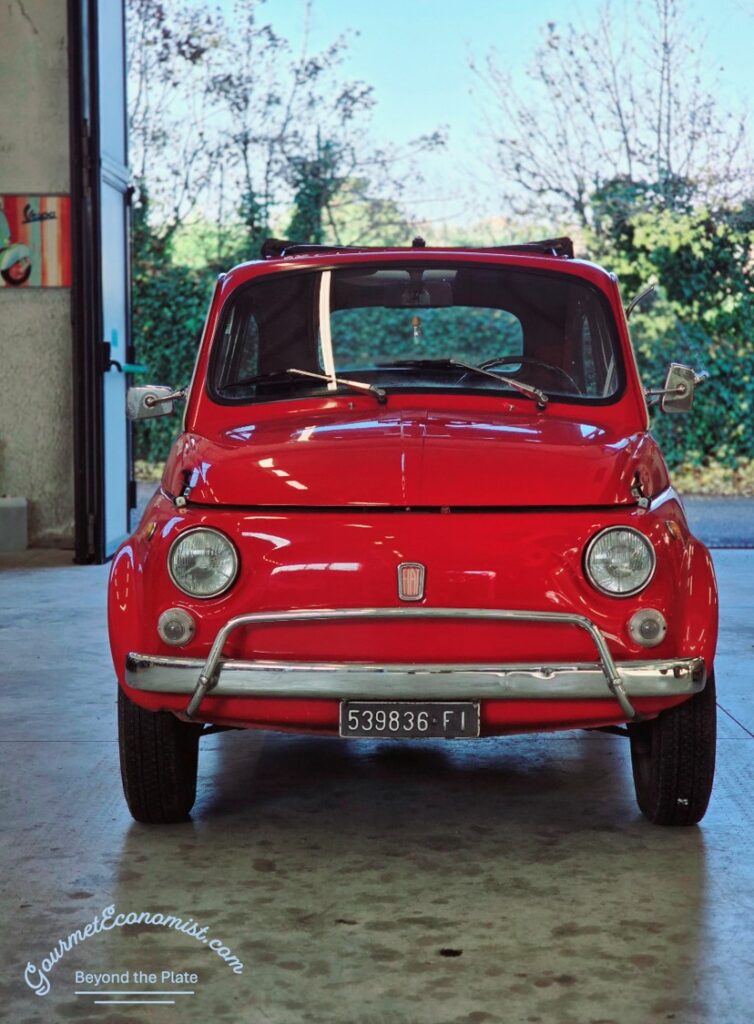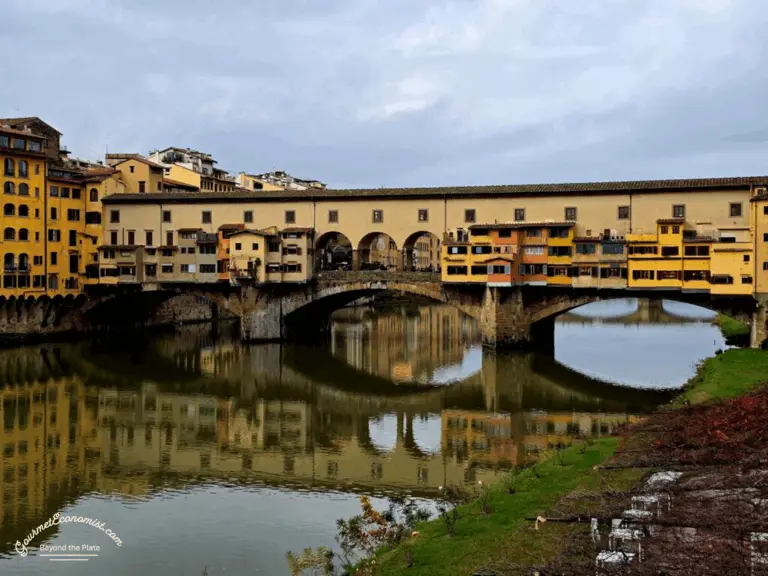The Economics of Nostalgia: How Vintage Fiat 500s Drive Florence’s Premium Tourism Market

Last November, while exploring Florence, my husband and I decided to venture beyond the usual tourist trail of museums and churches. We opted for a self-drive vintage Fiat 500 tour through the Tuscan countryside. As we navigated the narrow streets in our tiny 1960s Fiat, waving at amused locals, I found myself thinking about an economic paradox. Here I was, paying a premium to drive what was originally Italy’s “people’s car” – the 1960s equivalent of a basic economy vehicle. In Florence’s competitive tourism market, this experience commands prices of around €130 per person (as of November 2024), significantly higher than traditional Florence walking tours averaging €20-30. This price differential illustrates a fascinating economic phenomenon: how nostalgia transforms ordinary goods into luxury experiences.
The Market for Nostalgia
In the tourism market, particularly for heritage and vintage attractions, nostalgia creates a distinct shift in consumer preferences, altering the traditional price-quantity relationship. Research published in the Journal of Consumer Research by Lasaleta, Sedikides, and Vohs (2014), shows that nostalgia increases willingness to pay, weakening attachment to money. This psychological effect creates a unique market opportunity, particularly in tourism where authenticity commands a premium. In economic terms, nostalgia-based tourism products are what we call “experience goods” – products whose value can only be fully assessed through consumption. Unlike traditional tourist activities where value can be assessed through observable features – a monument’s architecture, a museum’s collection, or a beach’s amenities – nostalgia-based experiences such as this Fiat 500 tour, offer something more intangible: a temporary transport to a romanticized era. This intangibility creates unique pricing opportunities in the market.
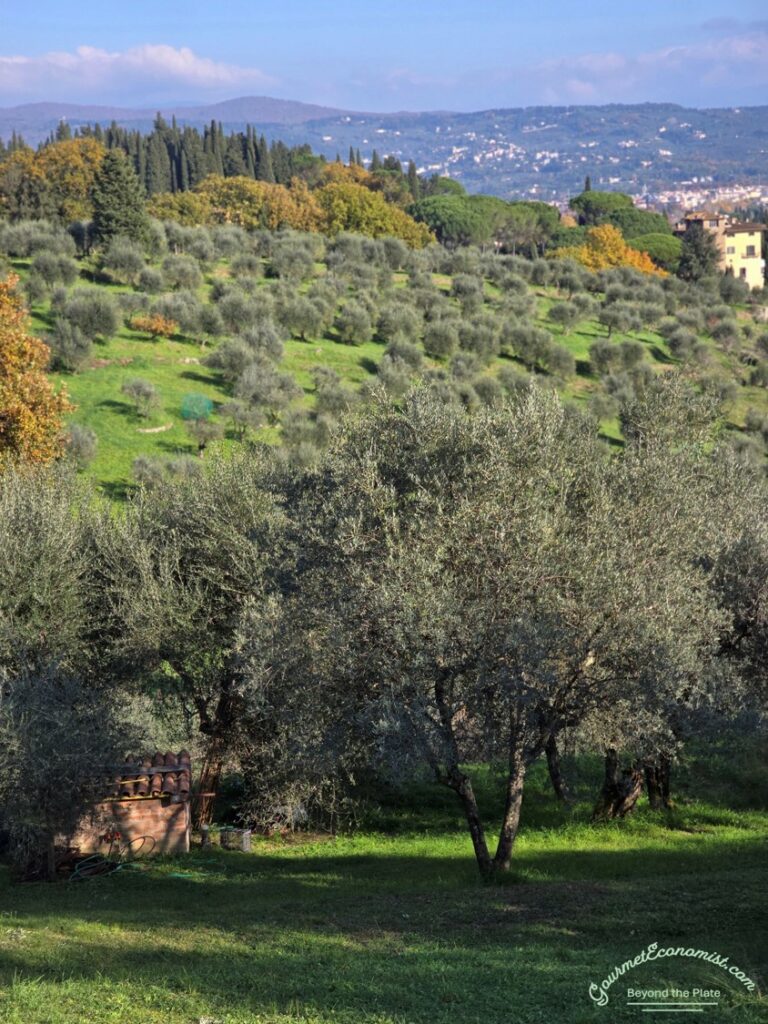
The Global Landscape of Nostalgia Tourism
Florence’s vintage Fiat tours aren’t an isolated phenomenon. Similar markets have emerged worldwide, each with its own economic dynamics. The Venice gondola market, for instance, shows how traditional transportation can evolve into an exclusive tourism product. While most visitors use Venice’s public water buses for practical transportation, gondolas have successfully positioned themselves as a luxury experience rather than mere transportation. This transformation from utilitarian service to exclusive tourist experience parallels what we see with Florence’s vintage Fiat tours.
At the luxury end of the nostalgia market spectrum, two rail experiences stand out. The Orient Express pioneered the concept of high-end heritage rail travel, where passengers pay elevated prices for the experience of golden-age European train journeys. This pricing strategy leverages what economists call “Veblen good” characteristics, where higher prices increase desirability among certain consumer segments. Similarly, India’s Palace on Wheels transforms the historical carriages of Rajasthan’s maharajas into an upscale tourism product. Started in 1982, it repurposed personal rail coaches of the princely states into a luxury hotel on wheels. Like the Orient Express, it commands top-tier prices by offering travelers a taste of royal-era train travel, complete with period furnishings and traditional service styles. Both examples demonstrate how colonial and royal nostalgia can be effectively monetized in luxury tourism markets.
At a different end of the spectrum, Cuba’s classic car tours present a fascinating case of necessity-driven market evolution. Due to economic sanctions and import restrictions beginning in 1960, Cubans maintained pre-revolution American cars out of necessity. Today, these vintage vehicles have become a unique tourism asset. These tours command higher prices compared to standard taxi services, demonstrating how historical constraints can create unexpected economic opportunities.
These diverse examples across Venice, the Orient Express, Palace on Wheels, and Cuba demonstrate how different markets have adapted nostalgic elements to create premium experiences, each shaped by their unique local contexts and constraints. In Florence, this global trend takes on its own distinctive character through the Fiat 500 tour market.
Economic Impact of Boutique Tourism
The Fiat 500 tours represent a distinctive form of tourism in Florence’s local economy. These tours require specialized skills – from mechanics who maintain vintage vehicles to guides who can navigate narrow streets in manual transmissions while sharing historical knowledge. The economic impact extends beyond the tour operators themselves, supporting a network of specialized service providers including parts suppliers, restoration workshops, and custom insurance providers. This creates a different pattern of economic activity compared to traditional tourism services.
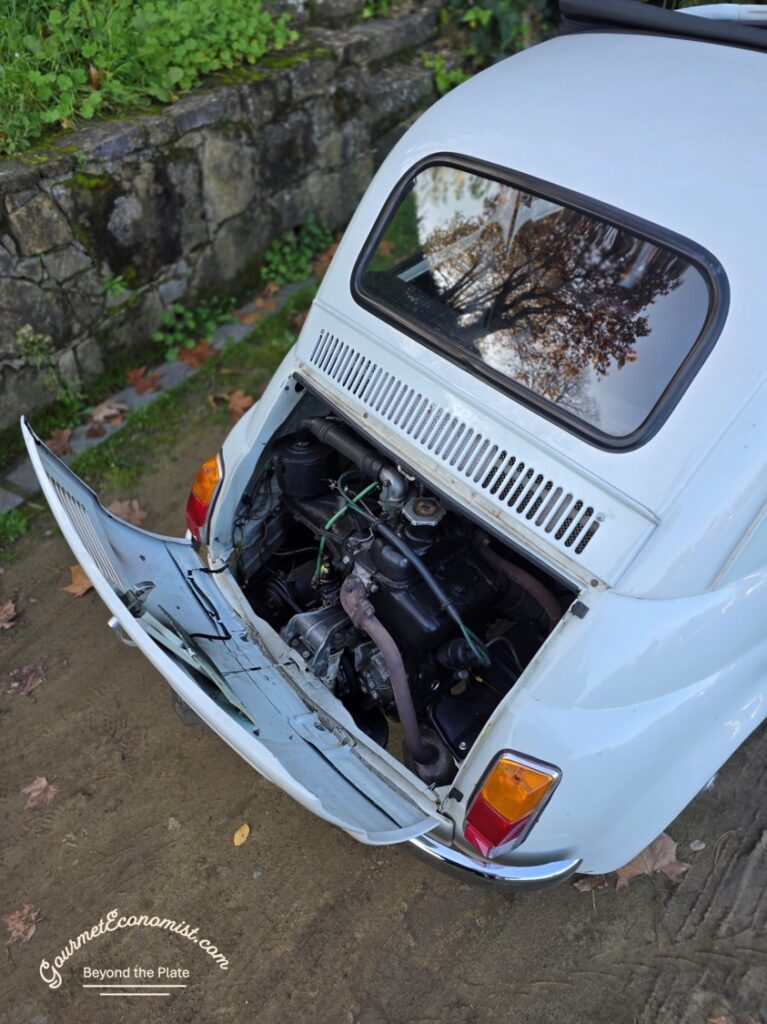
Market Forces and Consumer Value
The Fiat 500 tour market challenges traditional economic assumptions about transportation services. Standard economic theory suggests that rational consumers would choose the most cost-effective way to see Florence’s sights. Yet tourists regularly choose these higher-priced vintage car tours over cheaper alternatives like walking tours or public buses that would serve the basic function of city exploration. This behavior aligns with research by Ariely and Norton (2009) on conceptual consumption, which demonstrates how consumers’ choices are shaped by intangible factors beyond pure usefulness. Their research shows that consumers often value the meaning or story behind a product more than its functional benefits. In the case of Fiat 500 tours, tourists are not just paying for transportation through Florence – they’re purchasing an emotional connection to Italy’s cultural heritage.
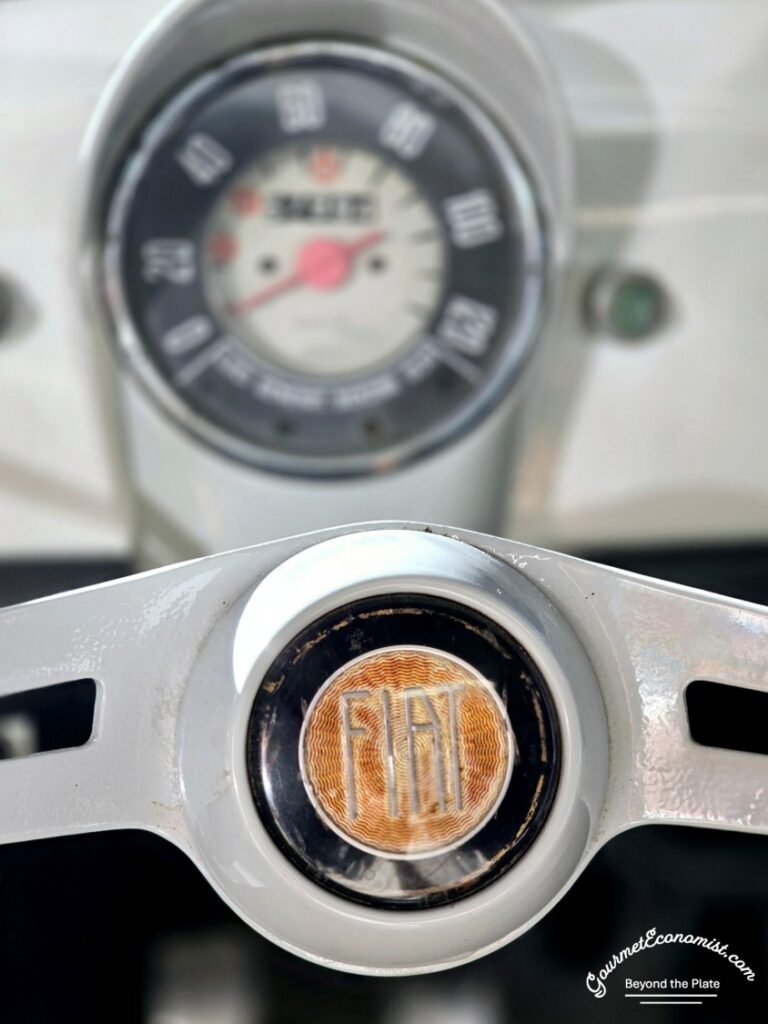
This consumer behavior exists within a complex market structure that illustrates several fundamental economic principles.
The vintage Fiat 500 tour market exemplifies the classic economic concept of experience goods. Unlike search goods where quality can be evaluated before purchase, experience goods create unique market dynamics that influence pricing strategies and consumer behavior.
Product Differentiation and Pricing Strategy
While the city offers numerous options for exploration, vintage car tour operators have transformed transportation from a utilitarian service into an experience product itself. The market structure allows operators to set premium prices through product differentiation. By positioning themselves as unique providers, tour operators can attract consumers with higher willingness to pay for unique experiences.
Tour operators employ multiple approaches for capturing consumer value. First, they use bundling – combining multiple value propositions into one product. The Fiat 500 tour bundles transportation, entertainment, and cultural immersion into a single package, allowing operators to capture more consumer surplus than they could by offering these components separately. Second, they employ tiered pricing based on route complexity, tour duration, and additional experiences like wine tasting or photography stops. This approach allows operators to meet diverse consumer preferences while maximizing the value of their unique service offering.
Information Asymmetry
The information asymmetry inherent in experience goods traditionally poses a challenge – providers know the quality of their experience, but potential customers cannot verify this before purchase. However, social media has fundamentally altered this dynamic. When potential customers see others enjoying Fiat 500 tours on Instagram or reading real-time reviews, it helps bridge the information gap. This digital word-of-mouth effectively reduces information asymmetry in the market, allowing tour operators to command premium prices based on demonstrated value rather than just promised experiences.
Scarcity
The vintage Fiat tour market has a particularly interesting supply characteristic: the number of authentic 1960s Fiat 500s suitable for tourism cannot be increased, regardless of market demand or potential profitability. This inelastic supply, combined with the unique experiential nature of the service, helps shape the market’s distinctive character.
The interplay of these factors – conceptual consumption patterns, experience good attributes, sophisticated pricing strategies, and the role of social media in reducing information asymmetry – creates a distinctive market where both operators and consumers derive value from what was once simply a means of transportation.
Future Prospects and Economic Implications
The market for specialized tourism experiences like vintage car tours presents both opportunities and challenges. While rising global affluence and increasing preference for unique experiences suggest growth potential, social media platforms have amplified this trend by creating additional economic value. These platforms transform tourism experiences into shareable content, extending their value proposition beyond the immediate service. However, the market also faces supply constraints. The limited availability of authentic vintage vehicles and increasing maintenance costs create scarcity. Additionally, potential regulations regarding vehicle emissions in historic city centers could impact operations, though such constraints might paradoxically enhance the exclusive status of grandfathered vintage car tours.
My morning touring Florence in that vintage Fiat 500 illustrated how markets can transform utilitarian goods into premium experiences. The tour demonstrates several key economic principles: how product differentiation creates new market segments, how emotional factors influence demand, and how specialized tourism services can generate distinctive patterns of economic activity through their support service requirements. The visual appeal of a vintage Fiat against Florence’s historic backdrop not only enhances the immediate experience but creates shareable content that drives demand through visibility on social media platforms. When potential customers see others enjoying these experiences online, it validates the pricing and enhances the perceived value of the experience.
As global consumers increasingly seek authentic experiences over standardized services, the economic principles observed in Florence’s vintage car tour market may predict broader trends in experiential tourism. The intersection of nostalgia and social media creates a powerful marketing channel that further differentiates these experiences from standard tourism offerings. While technology advances might enhance these experiences through augmented reality or personalized digital storytelling, the fundamental economic dynamics of nostalgia-based tourism – differentiated products commanding premium prices in response to distinct consumer preferences – are likely to persist.
